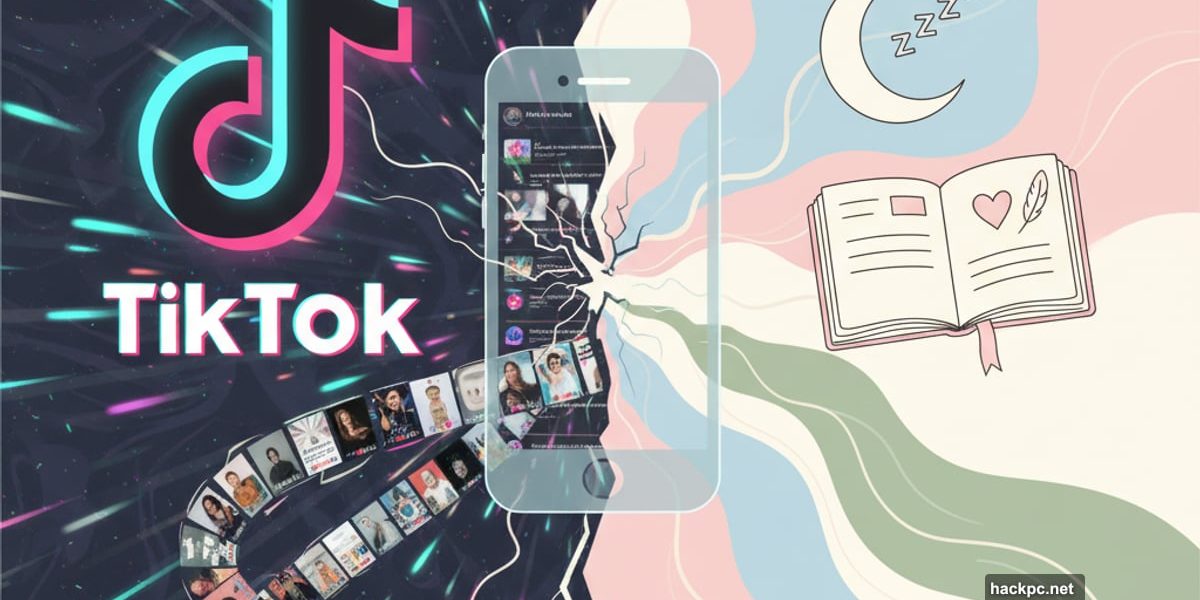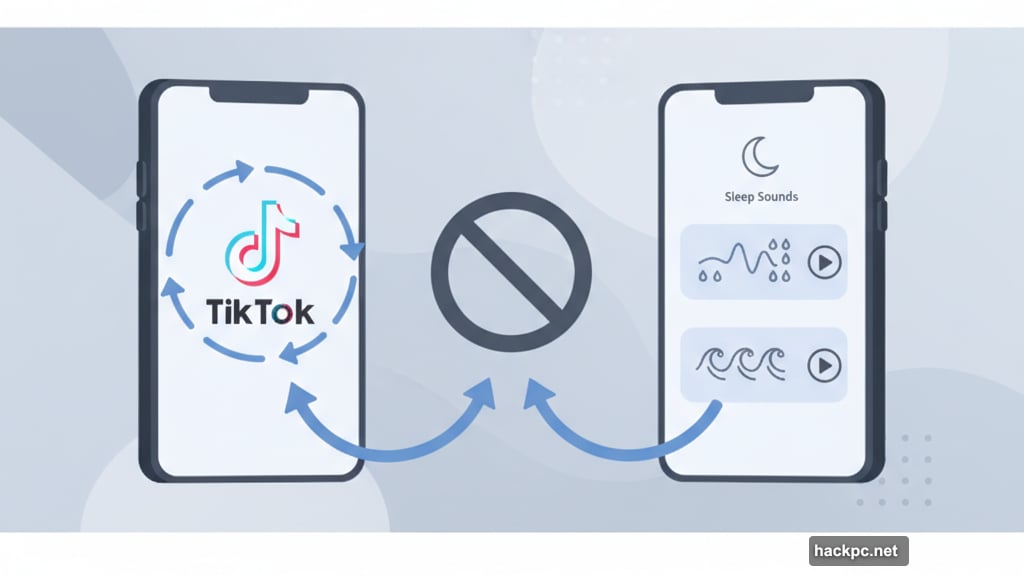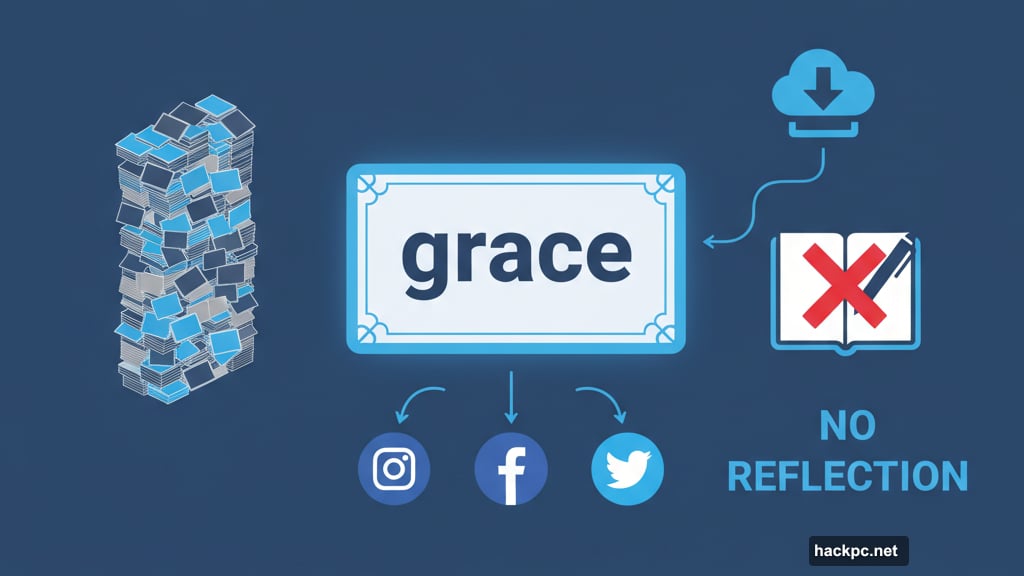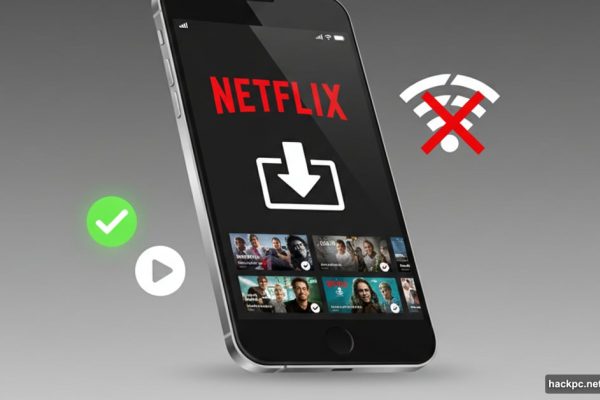
TikTok just dropped something unexpected. The app known for endless scrolling now wants to help you stop scrolling.
The company replaced its basic screen time page with a full “Time and Well-being” hub. Inside, you’ll find meditation tools, sleep sounds, and daily affirmation cards. It’s a strange pivot for an app designed to keep you hooked.
Let’s see if these features actually help or just make TikTok look responsible while keeping you glued to your phone.
Affirmation Cards That Feel Like Instagram Stories
TikTok added a digital affirmation journal with 120-plus intention cards. Each card displays a concept like “grace” or “gratitude.” The grace card, for example, reminds you to ignore others’ expectations.
You can download these cards to your device. Plus, you can share them across social media. That part feels predictable. Every wellness feature now includes sharing options because virality matters more than actual practice.
However, the concept isn’t terrible. Daily affirmations do help some people set intentions and reduce anxiety. Research from Carnegie Mellon University shows self-affirmation exercises can lower stress and improve problem-solving.
Still, TikTok’s implementation feels superficial. Real journaling requires reflection and writing. These cards just give you pre-written mantras to screenshot and forget.
Built-In Sleep Sounds for Doomscrollers
The new hub includes a soothing sound generator. You’ll find rain sounds, ocean waves, and white noise options. Each audio track plays for a few minutes before stopping automatically.
TikTok claims its users are 14 percent more likely than non-users to listen to music for relaxation or sleep. That statistic actually makes sense. The app’s algorithm surfaces ambient sound content pretty effectively.
But here’s the contradiction. TikTok wants you to use sleep sounds in the same app that disrupts your sleep. Studies consistently show social media use before bed reduces sleep quality and increases time to fall asleep.
So TikTok’s solution is to offer sleep aids inside the thing keeping you awake? That’s like McDonald’s selling diet pills at the register.

Breathing Exercises Nobody Asked For
TikTok now offers various breathing exercises directly in the app. Deep breathing reduces stress. That’s scientifically proven.
Yet the placement feels wrong. When you open TikTok stressed and anxious, your first instinct isn’t “let me find the breathing exercise feature.” You’re there to watch videos and escape.
Moreover, plenty of standalone apps handle meditation better. Calm, Headspace, and Insight Timer exist specifically for this purpose. They don’t compete with an infinite feed of attention-grabbing content.
TikTok’s breathing tools will likely get tried once and forgotten. They’re buried in a submenu most users won’t regularly visit.
Gamified Screen Time Missions for Teens
TikTok expanded its well-being missions originally launched in July. These challenges reward users with badges for healthy digital habits.
The new missions include:
- Sleep Hours Mission: Stay off TikTok at night
- Daily Screen Time Mission: Set and stick to time limits
- Weekly Screen Time Mission: Check your usage report
- Well-being Ambassador Mission: Invite friends to participate
This gamification approach targets teens specifically. And honestly, it might work better than lectures about phone addiction.
Teens respond to challenges, badges, and social validation. Duolingo proved gamification drives daily engagement. TikTok’s applying the same psychology to encourage less engagement.

That’s genuinely clever. Instead of fighting human nature, they’re using it to create healthier patterns.
However, there’s a cynical angle. TikTok gets to claim it’s addressing teen mental health concerns while keeping users on the platform. The missions don’t encourage deleting the app or using alternatives. They just reframe excessive use as a problem TikTok itself can solve.
The Bigger Picture About Digital Wellness
TikTok faces mounting pressure over teen mental health. Multiple studies link social media use to increased anxiety, depression, and sleep problems among adolescents.
Lawmakers across the U.S. have introduced bills to restrict teen social media access. Several states implemented or considered age verification requirements. France even proposed banning social media for users under 15.
So TikTok’s wellness features serve a dual purpose. They might genuinely help some users develop better habits. But they also function as political cover.
The company can tell regulators: “Look, we’re addressing the problem. We don’t need new laws.” Whether these tools meaningfully reduce harm remains questionable.
Research on digital wellness features shows mixed results. Screen time reminders and app limits help users become aware of their habits. But they rarely lead to lasting behavior change without additional motivation.
What Actually Works for Screen Time Management
If you genuinely want to reduce TikTok use, try these proven strategies instead:
Turn off all notifications. Push alerts trigger compulsive checking. Disable them entirely for social apps. You’ll check less often by default.
Use iOS Screen Time or Android Digital Wellbeing. Set app-specific time limits at the OS level. TikTok can’t override these restrictions. When your limit hits, the app locks automatically.
Delete the app on weekdays. Reinstall it only on weekends. That friction prevents mindless opening. Plus, you’ll appreciate the app more when you use it intentionally.

Replace scrolling with specific actions. Instead of “check TikTok,” decide to “watch five videos about cooking.” Having a defined endpoint prevents infinite scrolling.
Move TikTok off your home screen. Bury it in a folder several swipes away. That tiny barrier reduces impulsive opening by up to 40 percent according to habit formation research.
These tactics address the root problem: TikTok’s design makes mindless use the default. You need external systems that override that design.
The Contradiction TikTok Won’t Admit
TikTok’s business model depends on maximizing engagement. The algorithm gets better at holding your attention the more data it collects. Every second you spend on the app increases ad revenue.
Now TikTok offers tools to reduce that engagement. That’s genuinely noble if they work. But it creates an obvious conflict.
The company profits from your time. Their financial incentive opposes their stated wellness goals. So these features exist in tension with TikTok’s core business.
Compare this to YouTube’s approach. They added screen time reminders years ago. But their algorithm still optimizes for watch time above all else. The reminder becomes a minor speed bump on the way to another hour of content.
TikTok’s wellness hub will likely follow the same pattern. It’ll help users who already want to change their habits. But it won’t alter the app’s fundamental design: an endless, algorithmically optimized content feed engineered to capture and hold attention.
The affirmation cards are nice. The sleep sounds might help some people. But they’re band-aids on a bullet wound.
Real solutions require redesigning the app itself. Limiting autoplay. Removing infinite scroll. Showing content in finite batches instead of endless feeds. Those changes would genuinely reduce compulsive use.
But they’d also tank engagement metrics and ad revenue. So don’t expect them anytime soon.
TikTok’s new wellness features represent progress. Just very limited progress wrapped in positive PR.
Post Title: TikTok Adds Sleep Sounds & Affirmations: Do They Work?
Meta Description: [TikTok](https://www.tiktok.com) just dropped something unexpected. The app known for endless scrolling now wants to help you stop scrolling.



Comments (0)